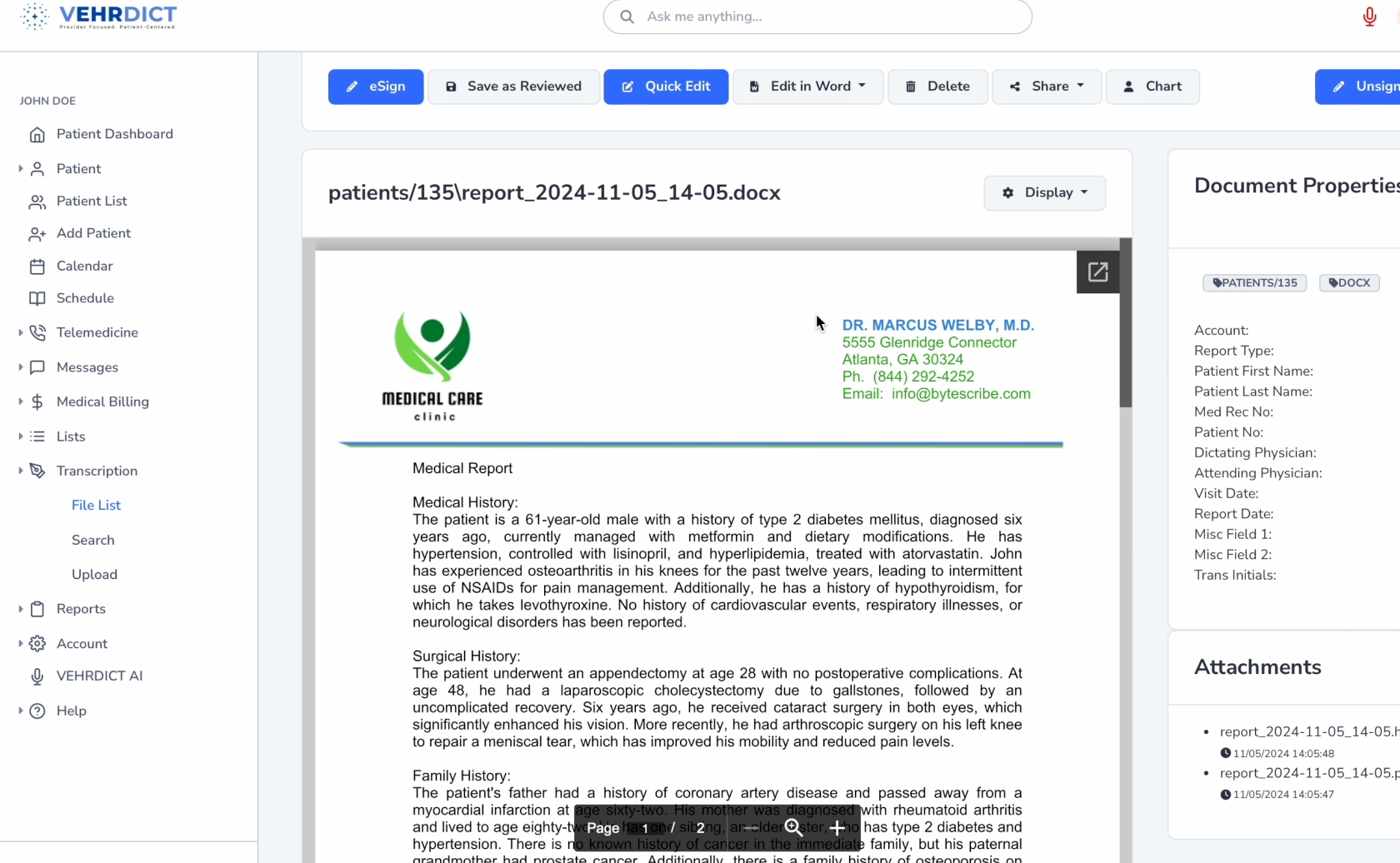Clinical Documentation: Difference between revisions
No edit summary |
No edit summary |
||
| Line 1: | Line 1: | ||
Clinical documentation in VEHRDICT is designed to streamline and enhance the way healthcare providers capture patient information during encounters. The system offers a structured yet flexible interface that supports both voice-driven AI input and traditional manual form entry. This ensures that clinicians can document efficiently in their preferred workflow without compromising accuracy or compliance. VEHRDICT supports the entire documentation process, from initial data capture to final report generation, making it a central hub for clinical records. | |||
[[File:medical_document.jpg|800px]] | |||
One of the core strengths of VEHRDICT lies in how it effortlessly aggregates data from multiple sources to build a comprehensive and accurate clinical narrative. During an encounter, information may come from patient intake forms, past medical history, real-time dictation, or even recorded interviews. VEHRDICT intelligently compiles all this data, minimizing manual entry and reducing the risk of omissions or inconsistencies. This consolidated data forms the basis of the final patient document, ensuring that all relevant details are available in one place. | |||
The EHR’s AI capabilities further elevate the documentation process by automatically organizing the collected information into a polished, professional report. VEHRDICT formats each document according to medical standards and best practices, ensuring it is ready for patient communication, internal use, or audits. Beyond formatting, the AI acts as a clinical guide—prompting the physician to include necessary elements required for regulatory compliance, insurance audits, and quality reporting. This helps maintain high documentation standards while reducing the administrative burden on clinicians. | |||
Revision as of 17:48, 15 July 2025
Clinical documentation in VEHRDICT is designed to streamline and enhance the way healthcare providers capture patient information during encounters. The system offers a structured yet flexible interface that supports both voice-driven AI input and traditional manual form entry. This ensures that clinicians can document efficiently in their preferred workflow without compromising accuracy or compliance. VEHRDICT supports the entire documentation process, from initial data capture to final report generation, making it a central hub for clinical records.
One of the core strengths of VEHRDICT lies in how it effortlessly aggregates data from multiple sources to build a comprehensive and accurate clinical narrative. During an encounter, information may come from patient intake forms, past medical history, real-time dictation, or even recorded interviews. VEHRDICT intelligently compiles all this data, minimizing manual entry and reducing the risk of omissions or inconsistencies. This consolidated data forms the basis of the final patient document, ensuring that all relevant details are available in one place.
The EHR’s AI capabilities further elevate the documentation process by automatically organizing the collected information into a polished, professional report. VEHRDICT formats each document according to medical standards and best practices, ensuring it is ready for patient communication, internal use, or audits. Beyond formatting, the AI acts as a clinical guide—prompting the physician to include necessary elements required for regulatory compliance, insurance audits, and quality reporting. This helps maintain high documentation standards while reducing the administrative burden on clinicians.
